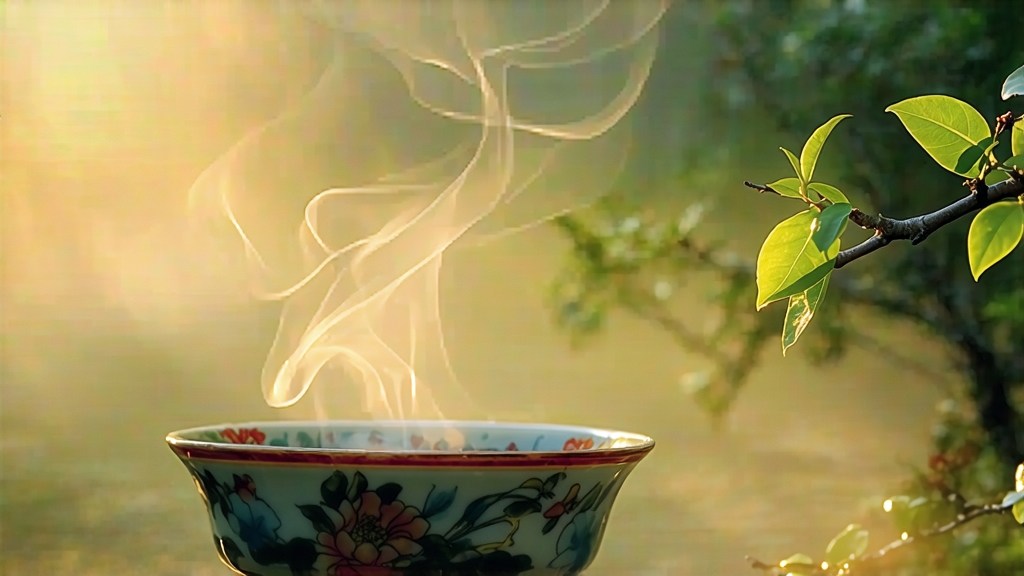
Alishan High-Mountain Oolong is not merely a tea; it is a liquid map of Taiwan’s central mountain range, a cup that carries the chill of 1,200-metre dawns, the perfume of rhododendron forests, and the patience of farmers who still judge leaf readiness by the moon. First planted on the slopes of Chiayi County in the late nineteenth century by tea pioneers who crossed the Taiwan Strait with Qing-era Tieguanyin cuttings, Alishan oolong evolved into a distinct cultivar after Japanese agronomists selected the soft-stemmed Qing Xin (Green Heart) variety for altitude trials in 1903. The marriage of Qing Xin’s low-temperature vigour with Alishan’s basalt-and-schist soils created a slow-growing bush that hoards aromatics, yielding leaves so tender they can be rolled into the tiny jade-green pearls that are now the hallmark of Taiwan’s high-mountain genre.
Unlike the heavily roasted Wuyi cliff teas or the bouquet-heavy Anxi Tieguanyin, Alishan oolong belongs to the “light fragrance, fresh green” school. Yet within this single appellation three micro-styles have emerged. “Lightly baked” (qing xiang) dominates the market: the leaf is dried at 80 °C for only two hours, preserving bright lily, snap-pea and alpine-milk notes. “Traditional charcoal” (tan xiang) sees the same leaf rested for thirty days, then finished over longan-wood embers at 55 °C for twelve hours, adding toasted coconut and warm flan layers without sacrificing high-note clarity. The rarest “wild cliff” (yan yun) is picked from seed-propagated bushes clinging to granite outcrops above 1,600 m; exposure to mineral mist compresses tannins, producing a liquor that tastes of wet slate, white peach and alpine honey in successive waves.
Plucking begins at dawn on the 88th day after the Qingming festival, when overnight temperatures drop below 14 °C and leaf moisture is balanced between dew and cellular sap. Two leaves and a bud are snapped sideways to keep the tiny “fish-tail” tip intact—this prevents browning during the 18-hour indoor withering that follows. Farmers lay the harvest on bamboo trays inside a mountain hut whose windows are cracked just enough to admit cloud-filtered light; the goal is to reduce grassiness while coaxing floral precursors. Every forty minutes the leaves are gently tossed by hand, a motion called “letting the green breath out,” until edges turn coral-red and the aroma drifts toward ripe guava.
Oxidation is arrested at 18 %—the sweet spot where catechins have partially converted but green integrity remains. A custom-built drum roaster, heated indirectly by infrared gas, flash-deactivates enzymes in ninety seconds, locking in a pistachio-coloured leaf. While still warm, the leaves are wrapped in cotton cloth and loaded into a mechanical kneading machine that alternates 12 rpm rolling with 200 kg compressions, gradually balling the leaf around its stem. This pelletising, repeated 28 times over two hours, ruptures cell walls just enough to release bound aromatics without shredding the surface; the spheres emerge tight enough to bounce on a porcelain plate.
Drying is done in three ascending temperature steps—90 °C, 100 °C, 110 °C—each followed by a 30-minute rest so that moisture migrates from stem to leaf and finally escapes. The finished maocha still contains 7 % residual water, ideal for the post-fermentation “resting month” during which amino acids polymerise, softening astringency and deepening the signature cream note. Only then does the charcoal master decide whether the tea will stay green-floral or journey toward amber roastiness.
To brew Alishan oolong Western-style, use 3 g per 250 ml of water at 90 °C and steep for three minutes; the cup will present a pale chardonnay liquor with a lifted orchid nose and a finish of fresh butter. Yet the leaf’s true voice emerges in a gongfu session. Pre-warm a 100 ml gaiwan, fill it one-third full with leaf (about 5 g), and flash-rinse with 95 °C water poured from a dragon-spout kettle held 15 cm high—height aerates and awakens the pellet. First infusion: 25 seconds, liquor the colour of mountain dawn, aroma of lily-of-the